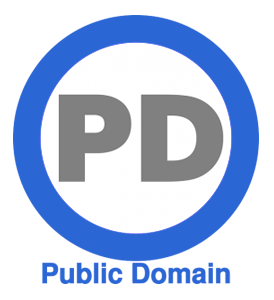 There is often much confusion with using images from the web on your website or collateral. Many assume that if it’s on the web, it must be free to use. This isn’t the case as the majority of images are copyright protected. Using these images indiscriminately can get a small business into big trouble with a copyright violation, a cease and desist and worse yet, having to take down your businesses website.
There is often much confusion with using images from the web on your website or collateral. Many assume that if it’s on the web, it must be free to use. This isn’t the case as the majority of images are copyright protected. Using these images indiscriminately can get a small business into big trouble with a copyright violation, a cease and desist and worse yet, having to take down your businesses website.
What is a Copyright?
A Copyright is a US federal law that protects original works of authorship. A work of authorship includes literary, written, dramatic, artistic, musical and certain other types of works.
- Copyright is in effect as soon as the original work is created and applies to published and unpublished works.
- Copyright is automatic and does not require paperwork to be filed. A registration is required to enforce the rights, but an author only has to use the © showing the work is copyrighted.
- Copyright does not apply to works in the public domain.
 What is Public Domain?
What is Public Domain?
“Public Domain” refers to creative materials that are not protected by intellectual property laws such as copyright, trademark or patent laws. The public owns the works, not an individual. Anyone can use a public domain work without obtaining permission, but no one will every own a public domain work.
A public domain work belongs to everyone. However, a collection of public domain works may be protected by copyright. Let’s say someone has collected public domain images in a book or on a website. The collection as a whole may be protected even though the individual images are not. You can copy and use the individual images, but copying the complete collection may infringe on what is known as the “collective works” copyright.
There are four common ways that works arrive in the public domain:
- The copyright has expired.
- The owner of the copyright has failed to renew the copyright or not followed the rules.
- The owner of the work deliberately placed it in the public domain; also known as dedication.
- Copyright law does not apply or protect this type of work.
Dedicated Works
If the work has the sentence: “This work is dedicated to the public domain” then it is free for you to use. Although rare, it has been done. Be aware that the person making the dedication must have the right to do so as only the owner of the work can dedicate it to the public domain.
Shareware & Freeware. Shareware and Freeware are not public domain works. Shareware is a system of marketing software, distributed at no charge on a trial basis and at the end of the trial, the user can purchase a license to continuing using it. Freeware is software that is made available to the public for free. Both Shareware and Freeware are protected under copyright law.
Clip Art. Clip art is often offered as “copyright-free.” This is actually inaccurate as the clip art would have to be either royalty-free or in the public domain. Most clip art is royalty-free and is copyrighted. Rights and limitations are found in the artwork packaging or in the license that accompanied the artwork. If the artwork is in the public domain, you can use it as you wish. But remember, if the artwork is in the public domain, the complete collection may not be reproduced and sold as a clip art collection because that may infringe the unique manner in which the art is collected (known as a compilation or collective work copyright).
What Copyright Does Not Protect
Copyright doesn’t protect the title of books or movies nor does it protect short phrases like “make my day” or “show me the money.” Copyright protection also doesn’t cover facts, ideas or theories. Short phrases, titles or small groups of words are considered common idioms and are free for anyone to use. However, a short phrase used as an advertising slogan is protected under trademark law.
A fact or a theory is not protected by copyright. An asteroid will pass the Earth in 2016 is a fact, not protected by copyright. If someone creates a theory that the asteroid will be destroyed by lasers, anyone could use that theory to create a movie or book. However the unique manner in which a fact is expressed may be protected. If a movie was made about a laser destroying the asteroid the presentation of the idea would be protected.
Stanford University Libraries offers this example: Neil Young wrote the song “Ohio” about the shooting of four college students during the Vietnam War. Anyone is free to use the facts about the short, but no one can copy Neil Young’s unique expression of these facts without his permission. In short, you can’t write a song about the shooting without violating copyright protection.
When in doubt, don’t. It’s that simple. Assume a work is copyrighted and don’t use it without permission. Don’t put your website–or your business–at risk by using someone else’s work. It’s just not worth it.
There is no shortage of resources for free images, whether public domain or licensed. Do your homework first or you could run into serious trouble.
Leave a Reply